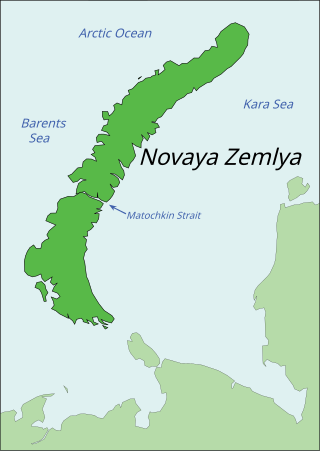Seven Sisters may refer to:
Forgotten Realms is a campaign setting for the Dungeons & Dragons (D&D) fantasy role-playing game. Commonly referred to by players and game designers as "The Realms", it was created by game designer Ed Greenwood around 1967 as a setting for his childhood stories. Several years later, it was published for the D&D game as a series of magazine articles, and the first Realms game products were released in 1987. Role-playing game products have been produced for the setting ever since, in addition to novels, role-playing video game adaptations, comic books, and the film Dungeons & Dragons: Honor Among Thieves.
Faerûn is a fictional continent and the primary setting of the Dungeons & Dragons world of Forgotten Realms. It is described in detail in several editions of the Forgotten Realms Campaign Setting with the most recent being the 5th edition from Wizards of the Coast, and various locales and aspects are described in more depth in separate campaign setting books. Around a hundred novels, several computer and video games and a film use Faerûn as the setting.
Mystra is a fictional goddess in the Forgotten Realms campaign setting for the Dungeons & Dragons fantasy role-playing game.
Abeir-Toril is the fictional planet that makes up the Forgotten RealmsDungeons & Dragons campaign setting, as well as the Al-Qadim and Maztica campaign settings, and the 1st edition version of the Oriental Adventures campaign setting.

The Yugorsky Strait or Yugor Strait is a narrow sound between the Kara Sea and the Pechora Sea. Its maximum width is 10 km and its minimum width only 3 km.

Georgy Lvovich Brusilov was a Russian naval officer of the Imperial Russian Navy and an Arctic explorer. His father, Lev Brusilov, was also a naval officer.

Operation Wonderland was an operation from 16 to 30 August 1942 by the Kriegsmarine in the Barents Sea and the Kara Sea off the Arctic coast of the Soviet Union. The operation was an attack on Soviet shipping using the Northern Sea Route which ran along the Soviet Arctic coast from the Bering Strait, westwards along Siberia to the Kara Sea. The operation was the first part of a campaign to dominate the seas of the western Arctic. Reports from Japanese naval intelligence alerted the Germans to the sailing of a convoy, EON-18.

Forgotten Realms Adventures is an accessory for the Forgotten Realms campaign setting for the second edition of the Advanced Dungeons & Dragons fantasy role-playing game. The book, with product code TSR 2106, was published in 1990, and was written by Jeff Grubb and Ed Greenwood, with cover art by Clyde Caldwell and interior art by Steven Fabian, Ned Dameron, Larry Elmore, Caldwell, and Jeff Easley.
Spine of the World may refer to:

Novaya Zemlya, also spelled Novaja Zemlja, is an archipelago in northern Russia. It is situated in the Arctic Ocean, in the extreme northeast of Europe, with Cape Flissingsky, on the northern island, considered the easternmost point of Europe. To Novaya Zemlya's west lies the Barents Sea and to the east is the Kara Sea.
During the Italian colonization of Libya, the Kingdom of Italy operated several concentration camps. During World War II, Fascist Italy operated several concentration camps and forced labor camps for the local population of Libya.

Sharism is a philosophy on sharing content and ideas, developed by Isaac Mao. Inspired by user-generated content, sharism states that the act of sharing something within a community produces a proper value for each of its participants: "the more you share, the more you receive". As knowledge is produced through crowdsourcing, this new kind of shared ownership leads to the production of goods and services where value is distributed through the contributions of everyone involved.

Kosovo is characterised by a diverse biodiversity and an abundance of different ecosystems and habitats determined by the climate along with the geology and hydrology. Predominantly mountainous, it is located at the center of the Balkan Peninsula bounded by Montenegro to the west, Serbia to the north and east, North Macedonia to the southeast, and Albania to the southwest.

Tired mountain syndrome is a condition in which underground nuclear testing fractures and weakens rock, increasing permeability and the risk of release of radionuclides and radioactive contamination of the environment. Locations said to have undergone the syndrome include the French Polynesian island of Moruroa, Rainier Mesa in the United States, the Dnepr 1 nuclear test site on the Kola Peninsula in Russia, possibly Mount Lazarev in the Novaya Zemlya Test Site in Russia, and Mount Mantap in North Korea.

In the Dungeons & Dragons role-playing game, Corellon Larethian is the leader of the elven pantheon, and the deity of Magic, Music, Arts, Crafts, Poetry, and Warfare. Corellon is also considered a member of the default D&D pantheon. Corellon is the creator and preserver of the elven race, and governs those things held in the highest esteem among elves. Corellon's symbol was originally a crescent moon; in the 4th edition Corellon's symbol is a silver star on a blue field.

Operation Zarin was a German minelaying operation off the north-western coast of the islands of Novaya Zemlya in the Arctic Ocean. The operation was conducted between 24 September and 28 September 1942 by the German heavy cruiser Admiral Hipper escorted by the destroyers Z23, Z28, Z29 and Z30, because the British had sunk the specialist minelayer Ulm on 25 August. The mines laid during the operation had little effect.









